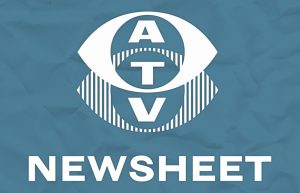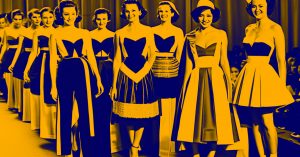This team helped to make history
ATV’s Telstar men


TELEVISION history was made last month—and ATV helped to make it, writes NORMAN HARE. Operation Telstar—providing a TV link across the Atlantic has proved, without any doubt, that when it comes to the big occasion ATV can meet it. In the many thousands of words which have been written about the occasion little mention has been made of the ITV contributions to its success. And because of an agreement between the companies not to seek individual publicity, no mention at all has been made of the skilled operators and facilities provided by ATV.
On the memorable Monday night when viewers in the United States looked-in on Europe, ATV provided the major contribution to the British programme.
An Outside Broadcasts unit was in Cornwall televising the launching of The Lizard lifeboat and another was in London providing night scenes with the Houses of Parliament as the focus of attention.
Tony Flanagan was the producer in charge in Cornwall with John Appleby as supervisory engineer. The pictures were fed into the GPO transmitter at Goonhilly in two “hops” by Links Dept men under Harry Angus.
Steve Wade produced the Company’s contribution in London with “Tiny” Crane in charge of engineering.
Sharing overall production responsibility with a BBC man in the whole of the London ITV/BBC contribution was Alan Chivers and at the nerve centre — the International Control Room at the BBC — sat Bill Ward and Len Mathews, the two men who, more than any others in ITV, had contributed towards the success of the operation. On the nights of the experimental transmissions and receptions, July 10-11, Company facilities were also used.
John Harrison was at Goonhilly operating the Mobile Ampex recording unit and put on record that first flickering picture which excited millions of viewers who had stayed up until lam to see the experiment. In the back of the van was the sound equipment which brought to ITV viewers the voice of Ian Trethowan the commentator. Here, John Appleby was in charge.

A behind-the-scenes crisis occurred when the rotary converter which the Company had sent to Goonhilly showed a bearing fault.
Without this aid the conversion from the English 50 cycles to the American 60 cycles would have been impossible and this would have placed the whole Telstar operation in jeopardy, so far as British participation was concerned.


An emergency call to London got our new diesel generator on the road heading for Cornwall as quickly as it could be driven by Geoffrey Humbling, accompanied by fitter Eric Griffiths. They left at teatime on Monday, drove 332 miles through the night and arrived at Goonhilly at 10 am on the Tuesday when Telstar went into orbit. They were later joined by fitter-driver Cyril Penfold.
Another ATV contribution to Telstar was the 20-minute film produced by Phil Wrestler and shown to viewers on both the Tuesday and Wednesday nights of the experiment.
Cameramen were Alan Harries and Mike Whittcutt at Westminster and Dave Higgon at The Lizard. Sound was handled by Ron Harding at The Lizard and Len Penfold, John Parker and Dave Ashley-Smith at Westminster. The backroom staff:— Dave Haley (Managing Engineer, Communications), Freddie Dix (Managing Engineer, OBs), Ross Compton (OB Planning Manager), Brian Longman and Ralph Taylor.
About the author
Norman Hare edited ATV's staff newsletter, ATV Newsheet




